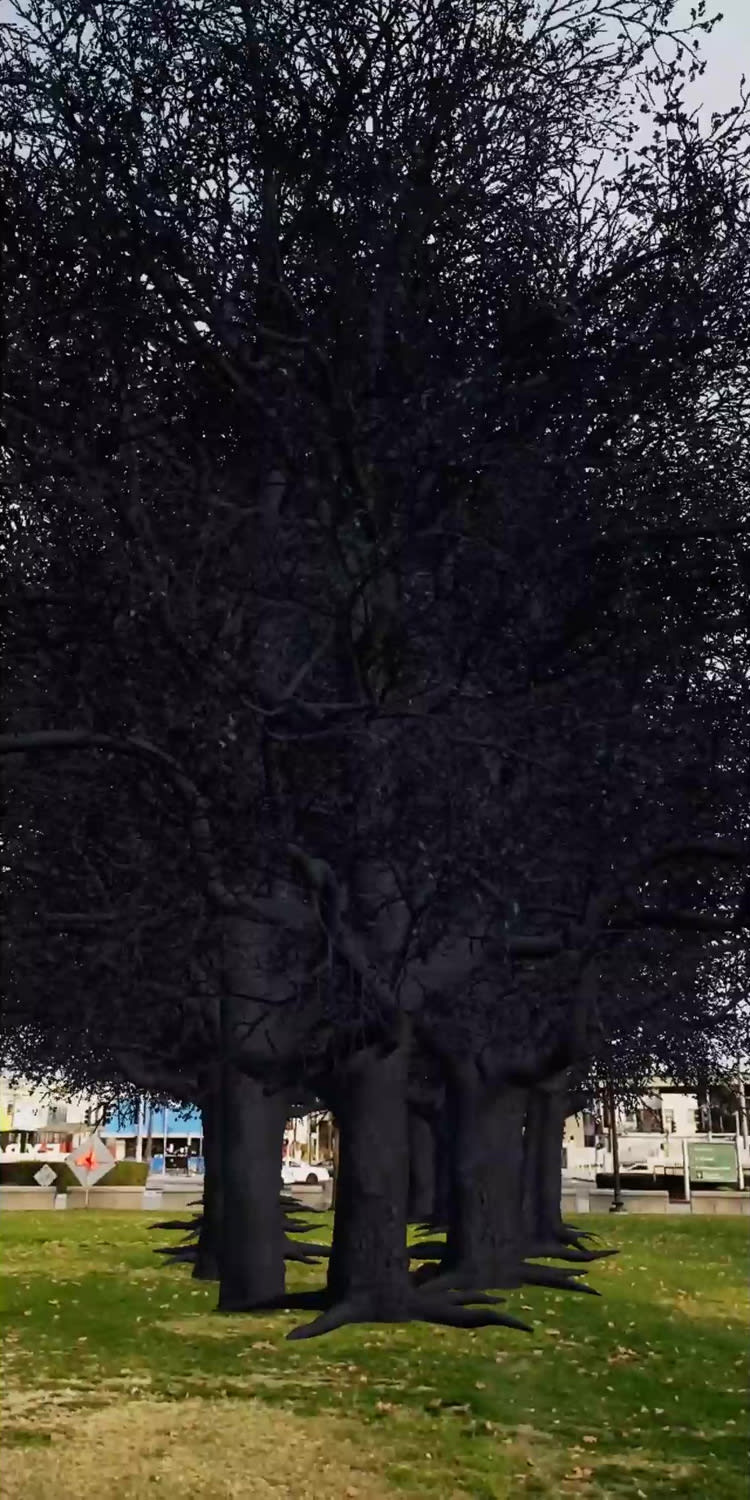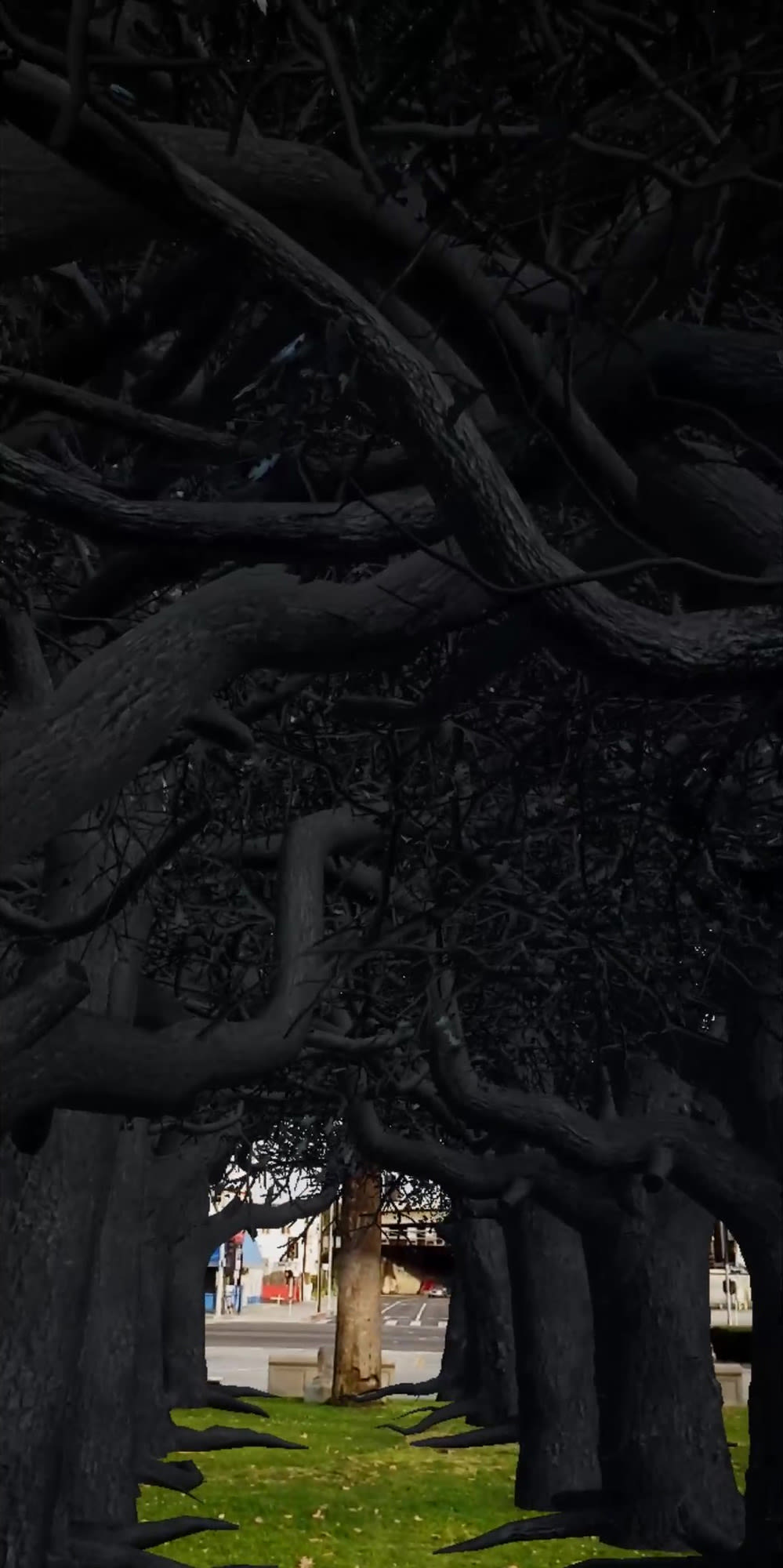Witness of Land, 2020-ongoing
AR performance, mobile application, a participatory project.
Trees are living time capsules of land. They are witnesses of history. They witness climate changes, migration, colonization, industrialization, and urbanization. They live long enough to witness the long history of displacement and discrimination, as well as the forgotten massacre and killing that took place under their shades. Outlive human lifespan, they are the evidence of the Anthropocene. They are the nonhuman others among the others.
Witness of Land is a performance project by Hings Lim that invites participants to maneuver the augmented reality (AR) application to bring forth the presence of witness trees. Upon the arboreal survivor and landmark in a neighborhood, the absence of the past is summoned, and the incantations are performed to conjure the memories of land while recalling the human history that still haunts.
Witness of Land (Historic Palm Tree at Exposition Park), 2021
AR performance, mobile application, Full HD screen recording, duration 6 minutes 30 seconds.
Performed by Hings Lim with the Historic Palm Tree at Exposition Park, Los Angeles, California on January 3, 2021. GPS coordinates: 34.01408625258346, -118.28327840069015
Exhibited
References
Jared Farmer, “Witness to a Hanging: California’s Haunted Trees,” Boom: A Journal of California, A Journal of California, 3, no. I (Spring 2013): 70–79, https://doi.org/10.1525/boom.2013.3.1.70.
Ken Gonzales-Day, Lynching in the West, 1850-1935 (Durham: Duke University Press, 2006).
Nathan Masters, “CityDig: L.A.’s Oldest Palm Tree Los Angeles Magazine,” Los Angeles Magazine (blog), April 17, 2013, https://www.lamag.com/citythinkblog/citydig-las-oldest-palm-tree/.
Nathan Masters, “The Oak Trees of Southern California: A Brief History,” KCET, February 7, 2013, https://www.kcet.org/shows/lost-la/the-oak-trees-of-southern-california-a-brief-history.






